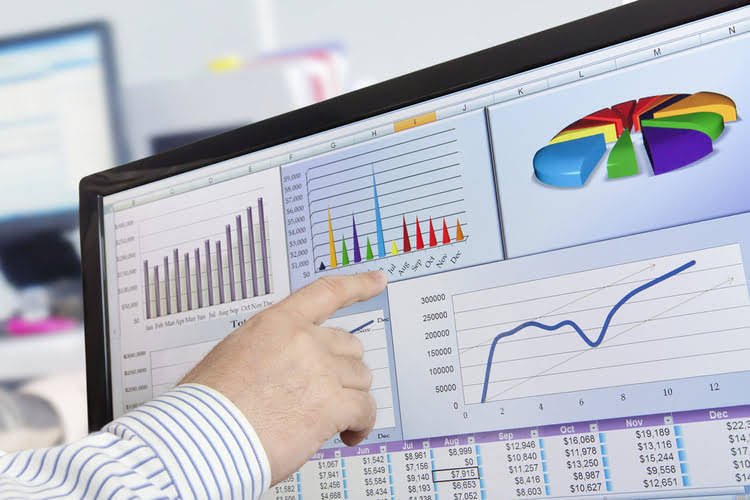An accounting adjustment called depreciation is made for fixed assets as they age. Depreciation may or may not reflect the fixed asset’s loss of earning power. In accounting, assets are categorized by their time horizon of use.
- Concorde Investment Partners owns three related subsidiaries, Concorde Investment Services, LLC, Concorde Asset Management, LLC, and Concorde Insurance Agency, Inc.
- Later, when the customer pays the amount owed, the company will credit Accounts Receivable (and will debit Cash).
- Fixed Assets – Fixed assets include equipment, vehicles, machinery, and even computers.
- If you loaned money to someone, that loan is also an asset because you are owed that amount.
Concorde later learned that some of the files that were accessible to the unauthorized party contained confidential consumer information. In response, Concorde secured the email account in question and then enlisted the help of third-party data security experts to assist with an investigation. While defining these set up and lookup objects, you
need to use the same reference data set value that you assigned to
the book for which these are created. While adding an asset or performing
any transaction on an asset in the book, you will see only the setup
object values that share the reference data set with this book. Equipment
This account reports the cost of the machinery and equipment used in the business. The cost of equipment will be depreciated over the equipment’s useful life.
Financial Assets
The ending balances in the balance sheet accounts will be carried forward to the next accounting year. Hence the balance sheet accounts are called permanent accounts or real accounts. Then, Concorde began the process of identifying the addresses of all affected parties, which the company was able to complete on September 29, 2023. Generally accepted accounting principles (GAAP) allow depreciation under several methods. The straight-line method assumes that a fixed asset loses its value in proportion to its useful life, while the accelerated method assumes that the asset loses its value faster in its first years of use. An asset can also represent access that other individuals or firms do not have.
- It may include investments in the common stock, preferred stock, and bonds of another corporation.
- We will discuss more assets in depth later in the accounting course.
- While these ideals are indeed commendable, they can only be fully realized in a safe environment.
Fixed Assets – Fixed assets include equipment, vehicles, machinery, and even computers. These assets generally have a useful life of more than one year and are usually more expensive understanding a balance sheet business purchases. Pretty much all accounting systems separate groups of assets into different accounts. These accounts are organized into current and non-current categories.
Michael Cohen says he was told to boost Trump’s asset values
Accounts Receivable – Accounts Receivable is an asset that arises from selling goods or services to someone on credit. The receivable is a promise from the buyer to pay the seller according to the terms of the sale. The seller has a claim on the buyer’s cash until the buyer pays for the goods or services. It includes any form of currency that can be readily traded including coins, checks, money orders, and bank account balances.
SEPTA warns of potential strike that could impact many city services
If assets are classified based on their convertibility into cash, assets are classified as either current assets or fixed assets. An alternative expression of this concept is short-term vs. long-term assets. Accumulated Depreciation
Accumulated Depreciation is known as a contra asset account because it has a credit balance instead of a debit balance that is typical for asset accounts. Whenever Depreciation Expense is debited for the periodic depreciation of the buildings, equipment, vehicles, etc. the account Accumulated Depreciation is credited. The credit balance in Accumulated Depreciation will continue to grow until an asset is sold or scrapped.
Importance of Asset Classification
The internet became a global phenomenon once people felt secure using it. Ecommerce took off once users felt comfortable typing their credit card information online. In the crypto realm, security is the linchpin to fostering trust and enabling the next billion users to join in. No one wants to invest their hard-earned money in an environment riddled with fraud, hacks, and scams. The following are brief descriptions of some common asset accounts.
Accounts Receivable
Accounts receivable is a right to receive an amount as the result of delivering goods or services on credit. Under the accrual method of accounting, Accounts Receivable is debited at the time of a credit sale. Later, when the customer pays the amount owed, the company will credit Accounts Receivable (and will debit Cash). Short-term Investments
Short-term or temporary investments may include certificates of deposit, bonds, notes, etc. that will mature in less than one year. It may also include investments in the common or preferred stock of another corporation if the stock can be easily sold on a stock exchange. Some assets like goodwill, stock investments, patents, and websites can’t be touched.
This account will report the amounts that a company has a right to receive but the sales invoices have yet to be prepared or entered in Accounts Receivable. Inventory – Inventory consists of goods owned a company that is in the business of selling those goods. For example, a car would be considered inventory for a car dealership because it is in the business of selling cars. A car would not be considered inventory for a pizza restaurant looking to selling it delivery car.
In the scenario of a company in a high-risk industry, understanding which assets are tangible and intangible helps to assess its solvency and risk. When looking at an asset definition, you’ll typically find that it is something that provides a current, future, or potential economic benefit for an individual or company. An asset is, therefore, something that is owned by you or something that is owed to you. A $10 bill, a desktop computer, a chair, and a car are all assets.
Descriptions of asset accounts
The cash surrender value of a life insurance policy owned by a company is also reported under this asset heading. Prepaid Expenses – Prepaid expenses, like prepaid insurance, are expenses that have been paid in advanced. Like accounts receivable, prepaid expenses are assets because they are a claim to assets. If six months worth of insurance is paid in advance, the company is entitled to insurance (a service) for the next six months in the future. Fixed assets are resources with an expected life of greater than a year, such as plants, equipment, and buildings.
A current asset is one that has a useful life of one year or less. Concorde Investment Partners, LLC is a financial services company based out of Livonia, Michigan. Concorde offers its clients a range of services, including asset management, investment services and various insurance products. Concorde Investment Partners owns three related subsidiaries, Concorde Investment Services, LLC, Concorde Asset Management, LLC, and Concorde Insurance Agency, Inc.
Vehicles
This account reports the cost of trucks, trailers, and automobiles used in the business. The cost of vehicles is to be depreciated over the vehicles’ useful lives. Supplies
Supplies could be office supplies, manufacturing supplies, packaging supplies or other supplies that are on hand. The cost of the supplies that remain on hand is reported as an asset. Accrued Revenues/Receivables
Under the accrual method of accounting, revenues are to be reported when goods or services have been delivered even if a sales invoice has not been generated.




